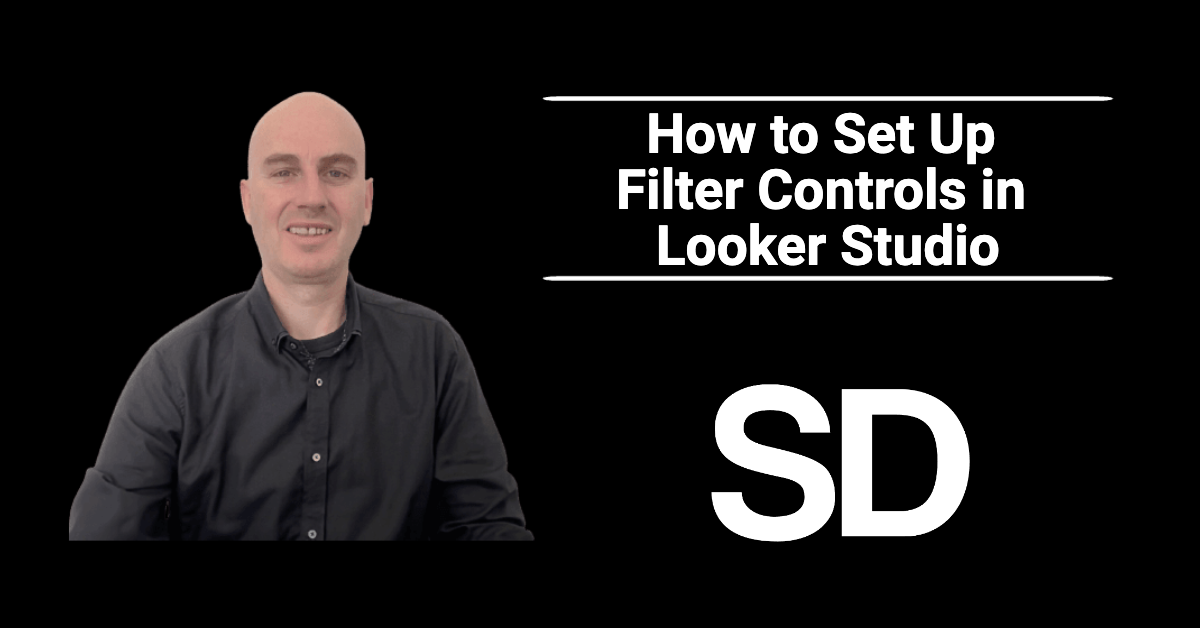Do you want to take your data reporting to the next level? Setting up filter controls in Looker Studio is the key to creating highly interactive and user-friendly data
reports.
In this tutorial, we’ll introduce you to the benefits of filter controls and guide you through the process of adding them to your Looker Studio reports, providing your audience with the power to explore data based on their unique preferences and requirements.
Header Outline:
- I. Introduction
- II. Understanding Filter Controls in Google Data Studio
- III. Adding Filter Controls to Your Report
- IV. Customising Filter Controls
- V. Interacting with Filter Controls
- VI. Considerations and Best Practices
- VII. Conclusion
I. Introduction
Looker Studio offers filter controls as a powerful tool to enhance data exploration and visualisation. In this guide, we will walk you through the process of setting up filter controls in your Looker Studio reports, enabling users to interact with the data and customise their analysis.
II. Understanding Filter Controls in Looker Studio
Filter controls in Looker Studio enable users to dynamically interact with the data presented in a report. By selecting specific criteria, users can narrow down data sets, apply date range filters, or choose specific data fields, resulting in a more personalised and data-driven analysis.
III. Adding Filter Controls to Your Report
A. Accessing Your Data Source and Report
- Sign in to your Looker Studio account.
- Open the Data Source that contains the data you want to visualise.
- Create or access the Report where you wish to add the filter controls.
B. Navigating to the Filter Controls Section
- In the Data Source, navigate to the “Control” section.
- Click on the “Add a control” button to begin setting up the filter.

C. Selecting the Data Field to Filter
- Choose the data field that you want to use as a filter from the available options.
- This data field will determine how users can interact with the data, such as selecting specific values or applying date range filters.
IV. Customising Filter Controls
A. Choosing the Filter Type
- For date fields, you can select a “Date Range” filter type, allowing users to apply custom date ranges to the data.
- For categorical or numerical fields, you can choose a “Data Field” filter type, enabling users to select specific values or ranges.
B. Applying Date Range Filter
- If you selected a date field for the filter, configure the date range options, such as default date range, relative date range, or a fixed date range.
- Test the date range filter to ensure it functions as intended.

C. Implementing Data Field Filter
- For categorical or numerical fields, choose the filter’s behaviour, such as single-select or multi-select options.
- Customise the filter’s appearance, such as renaming the filter control for clarity.

V. Interacting with Filter Controls
- Preview your report to see how the filter controls behave and interact with the data.
- Users can now use the filter controls to customise their data analysis based on their preferences.
VI. Considerations and Best Practices
- Use relevant and meaningful data fields for filter controls to improve user experience.
- Avoid overwhelming users with too many filter options; focus on the most relevant data fields.
- Test the filter controls thoroughly to ensure they work as intended and provide accurate data.
VII. Conclusion
Setting up filter controls in Looker Studio empowers users to interact with the data, customise their analysis, and make data-driven decisions. By following the steps in this guide and applying best practices, you can create dynamic and interactive reports that deliver valuable insights to users.
Enhance your Looker Studio reports with filter controls and elevate data exploration to new levels of interactivity.
